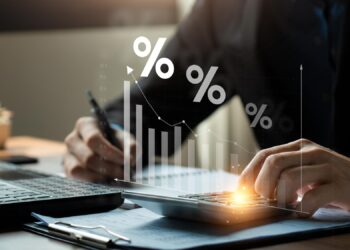We believe that in time COVID-19 will be seen as a catalyst which evolves over the medium-term into a crisis of solvency and trade relations. The virus itself is not the main event.
Evidence is starting to emerge that the risks of concentrated production in any one location are being acknowledged. Japan has earmarked $2.2 billion of its stimulus to shift Japanese manufacturers out of China. According to a recently released survey by the US National Association of Manufacturers, more than half of all manufacturers are planning changes to their supply chains in the coming months as a result of the pandemic. Larry Kudlow, director of the United States National Economic Council, recently publicly stated that the government should compensate every US firm wanting to move out of China.
We believe the grounds are shifting into terms of trade relations and geopolitics, which have the potential to substantially affect global financial markets over the medium to longer-term. This is certainly worth watching as the situation evolves, with an increase in rhetoric likely in the lead-up to the US presidential election scheduled for 3 November 2020. It could be the case that costs are permanently higher and margins lower, and trade skirmishes the norm rather than the exception.
Learning to live with the virus
Recent lifting of restrictions across the nation and the sheer magnitude of the stimulus provided offer significant short-term positives, with the prospect of a V-shaped recovery not as unlikely as many would believe.
It’s important to note that job creators in Australia are primarily small businesses. JobKeeper and JobSeeker payments have effectively suppressed the true unemployment and insolvency rates for the moment, but we can’t afford to continue borrowing billions per month to keep the Australian economy alive. Added to that, analysis from Goldman Sachs suggests that without extensions to government support, household incomes will face a cliff drop in the last quarter of calendar year 2020. However, this is already well understood by the market.
The speed of the recovery is key to its success, and that depends on how quickly governments (state and federal), consumers and businesses can learn to live with the virus. Inevitably, this will require creative thinking and innovative ways of operating until a vaccine or successful treatment is found. We’re already seeing examples of businesses prepared to modify how they operate in order to kick-start a reopening process, with restaurants offering meal kits, the AFL operating in hubs with vigorous player testing, and some casinos reopening to premium members.
This inevitably opens up the risk of second and third waves of the virus, but economically speaking, learning to live with it may be the best option.
Where to from here
The Australian equity market has bounced back, with the S&P/ASX 300 Accumulation Index up 22 per cent (as at 22 May 2020) from its lows in March, driven by large government stimulus programs, emergency central bank easing measures, and the apparent success of social distancing and other measures in containing the spread of COVID-19. At the time of writing, the market was heading higher still off the back of COVID-19 restrictions easing in Australia.
What everyone wants to know, of course, is whether the ASX close of 4,500 on 23 March is the bottom in this bear market. At that time, the market fell 36 per cent from its peak on 20 February 2020, and has since seen the aforementioned bounce. It’s important to remember that to recover the 36 per cent loss, the market needs to rise 56 per cent (which is why we believe capital preservation is so important).
We do not believe the recent rally represents a new bull market. We think volatility will remain high and that a new bull market is several years away. Our view is that the market will trade in a broad range until the outcome of the US election on 3 November 2020 is known.
Our positioning in our long/short equity fund remains cautious. However, we are mindful that this thinking has become consensus, so we are wary of pushing our net exposure to the market too low in the short-term. Our net market exposure has averaged approximately 40 per cent since inception and we are currently just above 60 per cent.
Furthermore, the full economic impact of the COVID-19 restrictions could take months to play out, and rallies during these times can be violent. Our priority is protecting our investors’ capital, and it’s with that at the front of our mind that we watch and act in a highly volatile environment.
Kristiaan Rehder, portfolio manager, Kardinia Capital







